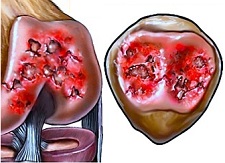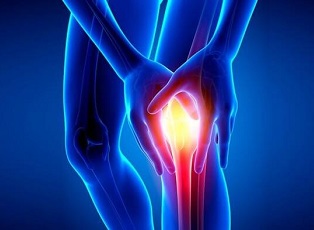- Home
- Common Knee Conditions
- Patella Alta
Patella Alta
Written By: Chloe Wilson, BSc(Hons) Physiotherapy
Reviewed by: KPE Medical Review Board
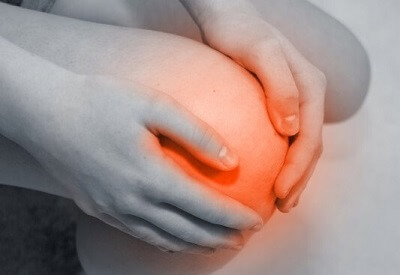
Patella Alta, aka high riding patella, is where the kneecap sits higher than normal on the thigh bone.
This makes the knee less stable and prone to dislocation and anterior knee pain.
In most cases, individuals are born with patella alta, but it can also develop secondary to a knee injury such as rupture of the patellar tendon.
Here we look at what patella alta is and why it causes problems, common causes and symptoms, how it is diagnosed and the different treatment options for high riding patella.
What Is Patella Alta?
The patella, or kneecap, is a small, inverted (upside down) triangular bone that sits at the front of the knee.
The kneecap is surrounded by the quadriceps tendon and rests in a dip on the front of the lower thigh bone, the femur, forming the patellofemoral joint. This dip is known as the patellofemoral groove, aka patella groove, trochlear groove or intercondylar groove. As the knee moves, the patella slides up and down this groove.
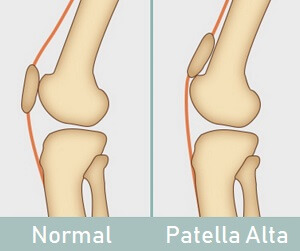
The patellar tendon comes out from the bottom of the kneecap and connects the kneecap to the shin bone, the tibia.
In patella alta, the kneecap sit higher than normal in the patella groove. Here, the groove is much shallower than further down, thus providing only a very small barrier each side of the kneecap.
As a result, the groove provides very little sideways stability for the kneecap.
Common Causes Of Patella Alta
The common causes of patella alta are:
- Congenital Defect: In most cases, patella alta is present from birth and likely occurred during embryonic development
- Long Patellar Tendon: People with abnormally long patellar tendons, >52mm, often suffer from patella alta
- Knee Injuries: Patella alta may develop after a knee injury, typically kneecap dislocation
- Cerebral Palsy: Patella alta is a common abnormality with cerebral palsy, especially in children who walk with bent knees
Patella Alta is what is known as an idiopathic condition, meaning that the cause of high riding patella is typically unknown.
Patella Alta Symptoms
Typical symptoms of patella alta include:
- Instability: People with patella alta often complain that their knee feels weak or unstable, particularly when walking or running
- Recurrent Kneecap Dislocation: knee dislocation is a common problem for people with a high riding patella. Some people can push their kneecap in and out of position in the patellar groove at will causing it to dislocate and then relocate
- Anterior Knee Pain: pain at the front of the knee, aka patellofemoral pain, is common with patella alta, especially when walking up and down slopes, squatting, sitting for prolonged periods and on stairs
How Is Patella Alta Diagnosed?
To diagnose patella alta, your doctor will start by examining your knee. They will look at the position of the kneecap in relation to the femur from different angles and with the knee in different positions.
Physical Examination
- Full Knee Extension: when the knee is fully straight and relaxed, the kneecap can be moved slightly side to side. If it moves further than normal, your doctor will suspect patella alta
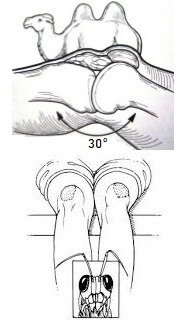
- Knee Slightly Bent: Patella alta often produces the “camelback sign” when the knee is bent to around 30 degrees flexion. When viewed from the side, two mounds are visible, like two humps on a camel, one from the high riding patella pointing upwards, the other from an enlarged infrapatellar fat pad or infrapatellar bursa
- Knee Bent: With patella alta, when the knee is bent to 90 degrees (a right angle), the kneecaps point upwards instead of forwards and may be externally tilted and rotated, twisted round to the outer side of the knee. This is known as a positive “grasshopper eyes sign”.
Imaging For Patella Alta
X-rays or MRI scans are typically used for definitively diagnosing patella alta. A lateral view from the side should be used, with the knee in 30 degrees of flexion. There are a number of different methods used to diagnose patella alta. Each one involves taking different measurements at the knee and working out their ratios:
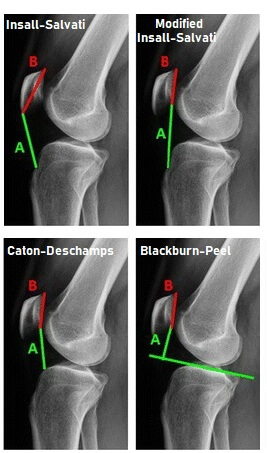
- Insall-Salvati Ratio: An A/B ratio greater than 1.2 indicates patella alta
A: patellar tendon length - measured from bottom of kneecap to insertion point on tibial tuberosity
B: Patellar length - greatest pole-to-pole measurement - Modified Insall-Salvati Ratio: Patellar length is measured slightly differently using the length of the articular surface (the back) of the patella. A normal A/B ratio here is 1.25, a ratio greater than 2 indicates patella alta
- Caton-Deschamps Index: If A/B is greater than 1.3 then it confirms the diagnosis of patella alta
A: Distance from lower pole of patella to front tip of the tibial plateau
B: Patella length: articular surface length - Blackburn-Peel Ratio: If the B/A ratio is over 1, it is considered to confirm a diagnosis of patella alta
A: Patella length – length of articular surface
B: Draw a horizontal line drawn along tibial plateau and measure from line to the bottom of the back of the kneecap (inferior aspect of articular surface)
Patella Alta Treatment
Treatment for patella alta aims to reduce knee pain and instability and restore full knee function.
#CommissionsEarned from Amazon on qualifying purchases
Non-operative treatment for a high riding patella will include:
- Rest: it is important to rest from aggravating activities to allow any inflammation to settle
- Strengthening Exercises: strengthening the knee, kneecap and buttock muscles can help to correct patella position and thus reduce pain and improve knee stability with a high riding patella - see knee strengthening exercises to find the best exercises for you
- Physical Therapy: Manual therapy can help to improve the resting position of the kneecap but should only be carried out by a qualified physical therapist
- Patellar Taping: taping can also help to correct the position of the patella. Your physio will show you how to tape the knee yourself so you can use sports tape yourself when exercising.
- Ice Packs: regularly applying ice packs can help reduce pain and inflammation with symptomatic patella alta - see the ice wraps section
- Knee Brace: wearing a brace can help to reduce the symptoms of a high riding patella. Ideally, the brace should have a tubular section which sits above the kneecap to stop it riding up - see the knee brace section
- Medications: Your doctor may recommend painkillers e.g. paracetamol/acetaminophen or ant-inflammatories e.g. ibuprofen/Advil to help reduce any pain and inflammation from patella alta
Operative Treatment
In severe cases of patella alta where the kneecap keep dislocating, or when conservative treatment fails, then surgery is necessary to effectively treat the condition. There are a number of different surgical options for patella alta:
- Tibial Tuberosity Osteotomy: aka Tibial Tubercle Transfer
This is when then patellar tendon attachment is moved down, which in turn brings the patella down with it. The Q angle can also be corrected if necessary by moving the patellar tendon attachment inwards.
A tibial tuberosity osteotomy is done by removing the tibial tuberosity from the front of the shin bone, moving it down and reattaching it in its new position with a screw and wires. - Lateral Release: If tightness in the structures on the outer side of the knee are pulling the kneecap out of position with a high riding patella then lateral release surgery can be carried out to loosen them. Find out what surgery involves in the lateral release section.
- Patellectomy: This is where the patella is completely removed and is only indicated when other surgical methods have failed or where there is severe patellofemoral arthritis
Recovering From Surgery
Following surgery for patella alta you will:
- Wear A Knee Brace: A hinged knee brace is usually worn for up to six weeks following surgery. The brace will limit the amount of flexion at the knee to allow it to heal properly
- Use Crutches: For the first couple of weeks you will only take minimal weight through the operated leg so will need to use crutches. You will then gradually be able to increase the weight through the leg over the next few weeks. Most people are off crutches by around six weeks. Check out our top tips for using crutches on the stairs
- Elevate Your Leg: Whenever you are sitting or lying down, try to keep your knee elevated to help reduce swelling. Either prop your leg up on pillows or use a special leg elevation cushion - ideally you want your knee higher than your heart.
- Have Physical Therapy: Once you are allowed to start moving your knee, you will start physical therapy to help to regain full strength, stability, movement and function in your knee starting with gentle knee strengthening exercises. By around 3 months you can start gentle impact activities such as lunges and then progress on to gentle jogging.
It usually takes around six months to fully recover from patella alta surgery and get back to high impact activities and sports.
Why Is Patella Alta A Problem?
Normally, when you bend and straighten the knee, the patella glides up and down the middle of the patellofemoral groove. The groove is nice and deep, forming a good barrier at the sides to keep the patella very stable by limiting the sideways movement of the kneecap.
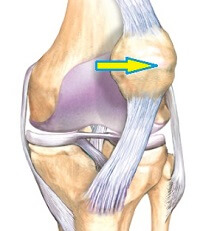
But with patella alta, because the kneecap is sitting higher than normal in the shallower part of the groove, there is less sideways stability.
The patella is therefore at risk of being pulled sideways over the low edge of the groove as the knee bends, and can partially or fully dislocate out of position.
Around 30% of cases of recurrent patella dislocation are thought to be due to patella alta.
Any time the patella dislocates or subluxes (partially dislocates), the cartilage on the back of the kneecap is at risk of damage which can lead to patellofemoral pain, aka anterior knee pain, and chondromalacia.
Having patella alta also increases the risk of developing knee arthritis and inflammation in the infrapatellar bursa, suprapatellar bursa or fat pad.
What Else Can Help?
If you have persistent pain in your knee, with or without instability, you should get checked out by your doctor.
There are a number of other conditions which cause anterior knee pain and present with similar symptoms to patella alta. Visit the front knee pain diagnosis section to find out more. You might also be interested in the following articles:
- How To Stop Knee Pain At Night
- Top Tips On Getting Up & Down Stairs With Knee Pain
- Noisy Knees: Do Your Knees Pop, Click Or Crack?
- How To Reduce Knee Swelling
- Best Resistance Band Exercises For Knee Pain
- Common Causes Of Knee Cap Pain
Page Last Updated: 09/05/24
Next Review Due: 09/05/26
Related Articles
References
1. Influence of patellar position on the knee extensor mechanism in normal and crouched walking. Rachel L. Lenhart, Scott C.E. Brandon, Colin R. Smith, Tom F. Novacheck, Michael H. Schwartz & Darryl G. Thelen. Journal of Biomechanics. November 2016
2. Patella Alta: A Comprehensive Review of Current Knowledge. Biedert RM, Tscholl PM. American Journal of Orthopedics. November 2017
3. Treatment of Patella Alta with Taping, Exercise, Mobilization, and Functional Activity Modification: A Case Report. Gregory W. Holtzman and Marcie Harris-Hayes. Physiotherapy Theory & Practice. January 2012
